Simultaneous Measurement of Volumetric Flowrates of Gas–Liquid Bubbly Flow Using a Turbine Flowmeter
Abstract
1. Introduction
2. Turbine Flowmeter and Experimental Procedure
2.1. Turbine Flowmeter
2.2. Experimental Procedure
3. Rotor Angular Velocity and Pressure Loss
3.1. Rotation of Rotor Due to Water Single-Phase Flow
3.2. Rotation of Rotor Due to Gas–Liquid Two-Phase Flow
3.3. Pressure Loss Multiplier
4. Experimental Results and Discussion
4.1. Rotor Angular Velocity and Pressure Loss for Water Single-Phase Flow
4.2. Rotor Angular Velocity and Pressure Loss for Gas–Liquid Two-Phase Flow
4.3. Measurement Method for Gas and Liquid Flowrates
4.4. Flowrate Measurement Accuracy
5. Conclusions
- The rotor rotational speed N increases linearly as the flowrate Qtp increases. The relationship between N and Qtp has little dependance on β, except at β = 0.1. Therefore, if Qtp can be expressed as a function of N in advance, Qtp can be identified by measuring N.
- The pressure difference across the turbine flowmeter Δptp, which corresponds to the pressure loss across the turbine flowmeter, increases with Qtp, with larger increments for higher values of β. Therefore, since Qtp can be represented as a function of N, β can be uniquely identified by measuring N and Δptp. Thereafter, the gas flowrate Qg = (βQtp) and liquid flowrate Ql [=(1 − β) Qtp] values can be derived from the obtained Qtp and β values.
- The full-scale accuracies of Qtp, β, Qg, and Ql of the present method were found to be 3.1%, 4.8%, 3.9%, and 3%, respectively, which are similar to or better than the values reported in the literature.
Author Contributions
Funding
Institutional Review Board Statement
Informed Consent Statement
Data Availability Statement
Conflicts of Interest
References
- Steven, R.N. Wet gas metering with a horizontally mounted Venturi meter. Flow Meas. Instrum. 2002, 12, 361–372. [Google Scholar] [CrossRef]
- Oddie, G.; Pearson, J.R.A. Flow-rate measurement in two-phase flow. Annu. Rev. Fluid Mech. 2004, 36, 149–172. [Google Scholar] [CrossRef]
- Dong, F.; Xu, Y.; Hua, L.; Wang, H. Two methods for measurement of gas-liquid flows in vertical upward pipe using dual-plane ERT system. IEEE Trans. Instrum. Meas. 2006, 55, 1576–1586. [Google Scholar] [CrossRef]
- Wang, D. Gas-liquid two-phase flow rate measurements by flow division and separation method. In Flow Measurement; IntechOpen: London, UK, 2012. [Google Scholar] [CrossRef]
- Wang, T.; Baker, R. Coriolis flowmeters: A review of developments over the past 20 years, and an assessment of the state of the art and likely future directions. Flow Meas. Instrum. 2014, 40, 99–123. [Google Scholar] [CrossRef]
- Zhang, H.J.; Lu, S.; Yu, G. An investigation of two-phase flow measurement with orifices for low-quality mixtures. Int. J. Multiph. Flow 1992, 18, 149–155. [Google Scholar] [CrossRef]
- Oliveira, J.L.G.; Passos, J.C.; Verschaeren, R.; van der Geld, C. Mass flow rate measurements in gas-liquid flows by means of a Venturi or orifice plate coupled to a void fraction sensor. Exp. Therm. Fluid Sci. 2008, 33, 253–260. [Google Scholar] [CrossRef]
- Zheng, G.B.; Jin, N.-D.; Jia, X.-H.; Lv, P.-J.; Liu, X.-B. Gas-liquid two phase flow measurement method based on combination instrument of turbine flowmeter and conductance sensor. Int. J. Multiph. Flow 2008, 34, 1031–1047. [Google Scholar] [CrossRef]
- Moura, L.F.M.; Marvillet, C. Measurement of two-phase mass flow rate and quality using Venturi and void fraction meters. Proc. ASME Int. Mech. Eng. Cong. Expo. 1997, 18381, 363–368. [Google Scholar]
- Zhang, H.J.; Yue, W.-T.; Huang, Z.-Y. Investigation of oil-air two-phase mass flow rate measurement using Venturi and void fraction sensor. J. Zhejiang Univ. Sci. 2005, 6A, 601–606. [Google Scholar]
- Meng, Z.Z.; Huang, Z.; Wang, B.; Ji, H.; Li, H.; Yan, Y. Air-water twophase flow measurement using a Venturi meter and an electrical resistance tomography sensor. Flow Meas. Instrum. 2010, 21, 268–276. [Google Scholar] [CrossRef]
- Sun, Z. Mass flow measurement of gas-liquid bubble flow with the combined use of a Venturi tube and a vortex flowmeter. Meas. Sci. Technol. 2010, 21, 1–7. [Google Scholar] [CrossRef]
- Xing, L.; Geng, Y.; Hua, C.; Zhu, H.; Rieder, A.; Drahm, W.; Bezdek, M. A combination method for metering gas-liquid two-phase flows of low liquid loading applying ultrasonic and Coriolis flowmeters. Flow Meas. Instrum. 2014, 37, 135–143. [Google Scholar] [CrossRef]
- Minemura, K.; Egashira, K.; Ihara, K.; Furuta, H.; Yamamoto, K. Simultaneous measuring method for both volumetric flow rates of air-water mixture using a turbine flowmeter. Trans. ASME J. Energy Resour. Technol. 1996, 118, 29–35. [Google Scholar] [CrossRef]
- Li, Y.; Wang, J.; Geng, Y. Study on wet gas online flow rate measurement based on dual slotted orifice plate. Flow Meas. Instrum. 2009, 20, 168–173. [Google Scholar] [CrossRef]
- Wang, L.; Liu, J.; Yan, Y.; Wang, X.; Wang, T. Gas-liquid two-phase flow measurement using Coriolis flowmeters incorporating artificial neural network, support vector machine and genetic programming algorithms. IEEE Trans. Instrum. Meas. 2017, 66, 852–868. [Google Scholar] [CrossRef]
- Uchiyama, T.; Takamure, K.; Okuno, Y.; Sato, E. Development of a self-powered wireless sensor node to measure the water flowrate by using a turbine flowmeter. Internet Things 2021, 13, 100327. [Google Scholar] [CrossRef]
- Takamure, K.; Uchiyama, T.; Horie, K.; Nakayama, H. Effect of cone on efficiency improvement of a self-powered IoT-based hydro turbine. Adv. Mech. Eng. 2022, 14, 16878132221107249. [Google Scholar] [CrossRef]
- Uchiyama, T.; Honda, S.; Degawa, T. Development of a propeller-type hollow micro-hydraulic turbine with excellent performance in passing foreign matter. Renew. Energy 2018, 126, 545–551. [Google Scholar] [CrossRef]
- Mishima, K.; Ishii, M. Flow regime transition criteria for upward two-phase flow in vertical tubes. Int. J. Heat Mass Transf. 1984, 27, 723–737. [Google Scholar]
- Arand, S.J.; Ardebili, M. Cogging torque reduction in axial-flux permanent magnet wind generators with yokeless and segmented armature by radially segmented and peripherally shifted magnet pieces. Renew. Energy 2016, 99, 95–106. [Google Scholar] [CrossRef]
- Garcia-Gracia, M.; Romero, J.; Ciudad, J.H.; Arroyo, S.M. Cogging torque reduction based on a new pre-slot technique for a small wind generator. Energies 2018, 11, 3219. [Google Scholar] [CrossRef]
- Lockhart, R.W.; Martinelli, R.C. Proposed correlation of data for isothermal twophase, two-component flow in pipes. Chem. Eng. Prog. 1949, 45, 39–48. [Google Scholar]
- Akagawa, K. The flow of the mixture of air and water: III. The friction losses in horizontal, inclined, and vertical Tubes. Trans. JSME 1957, 23, 292–298. [Google Scholar] [CrossRef]
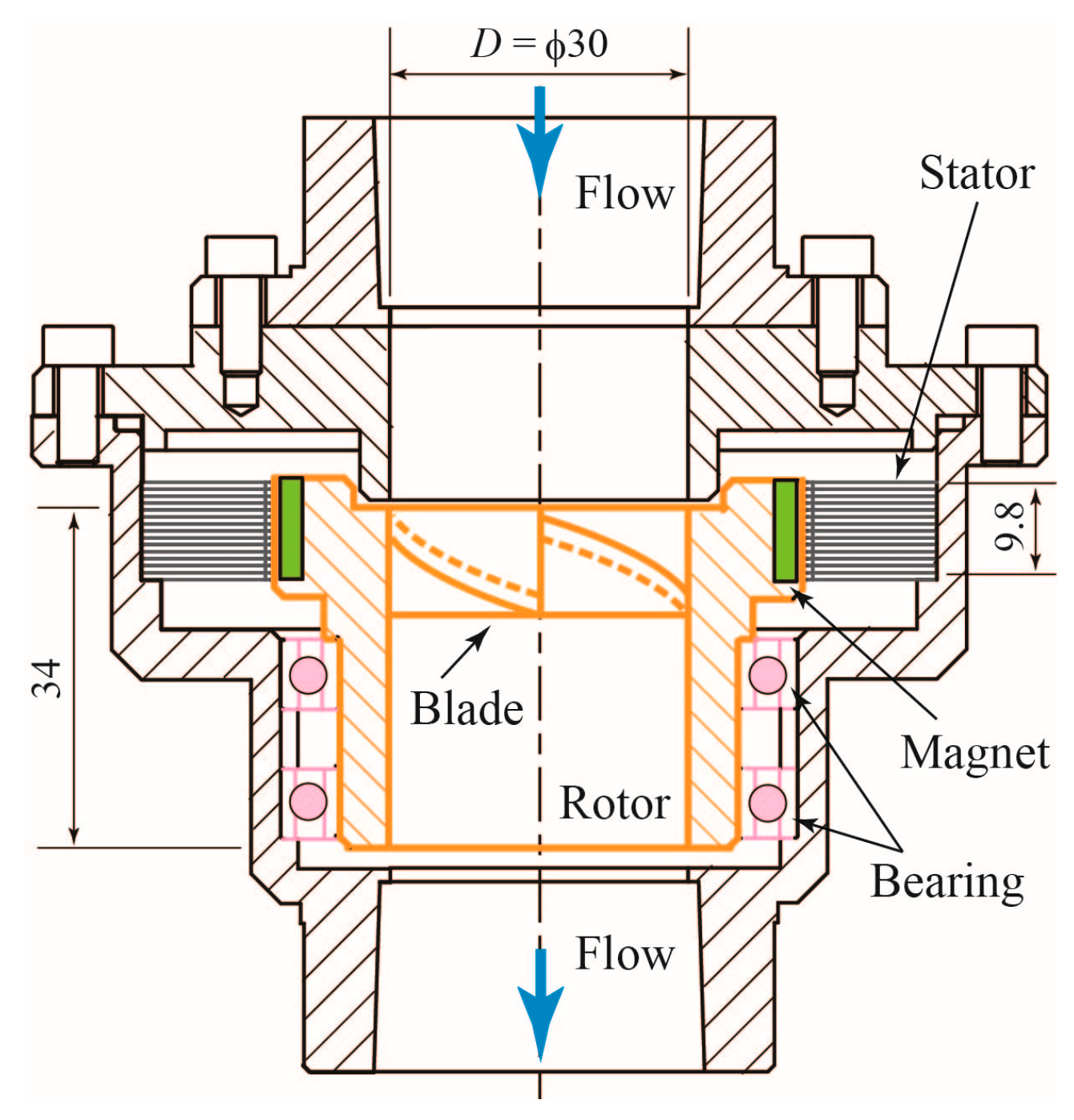
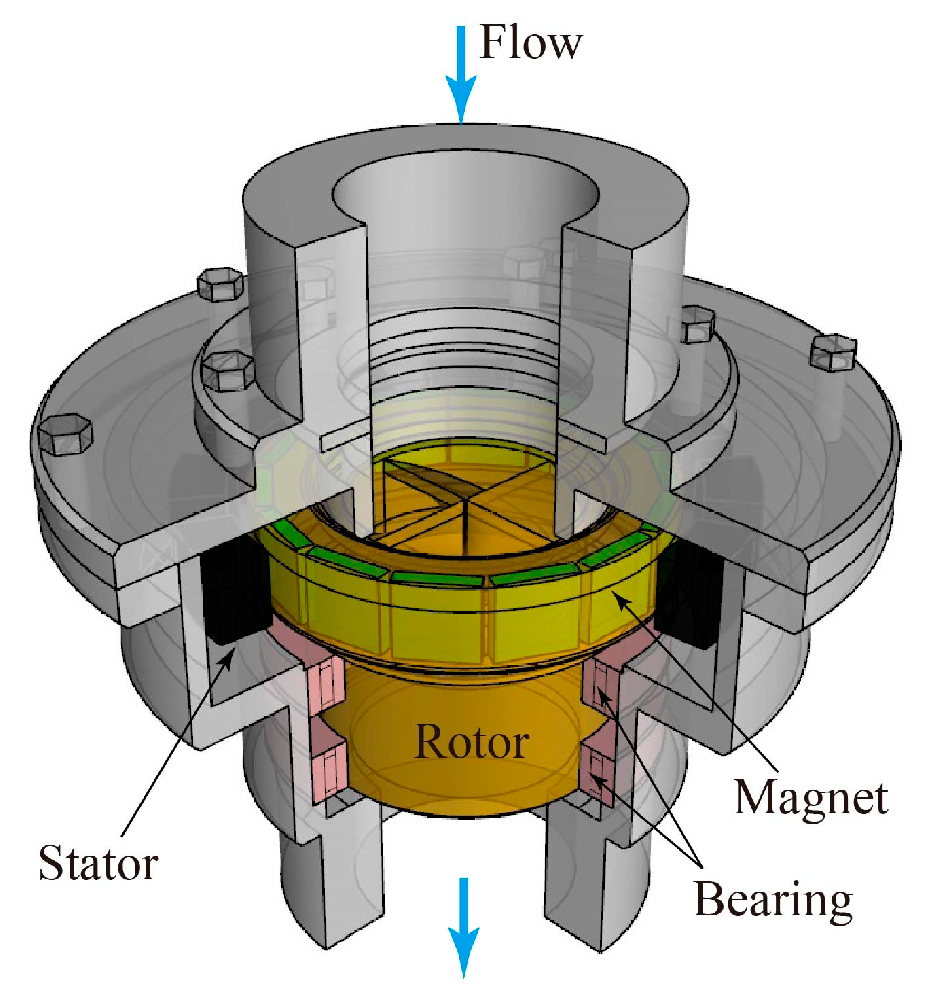

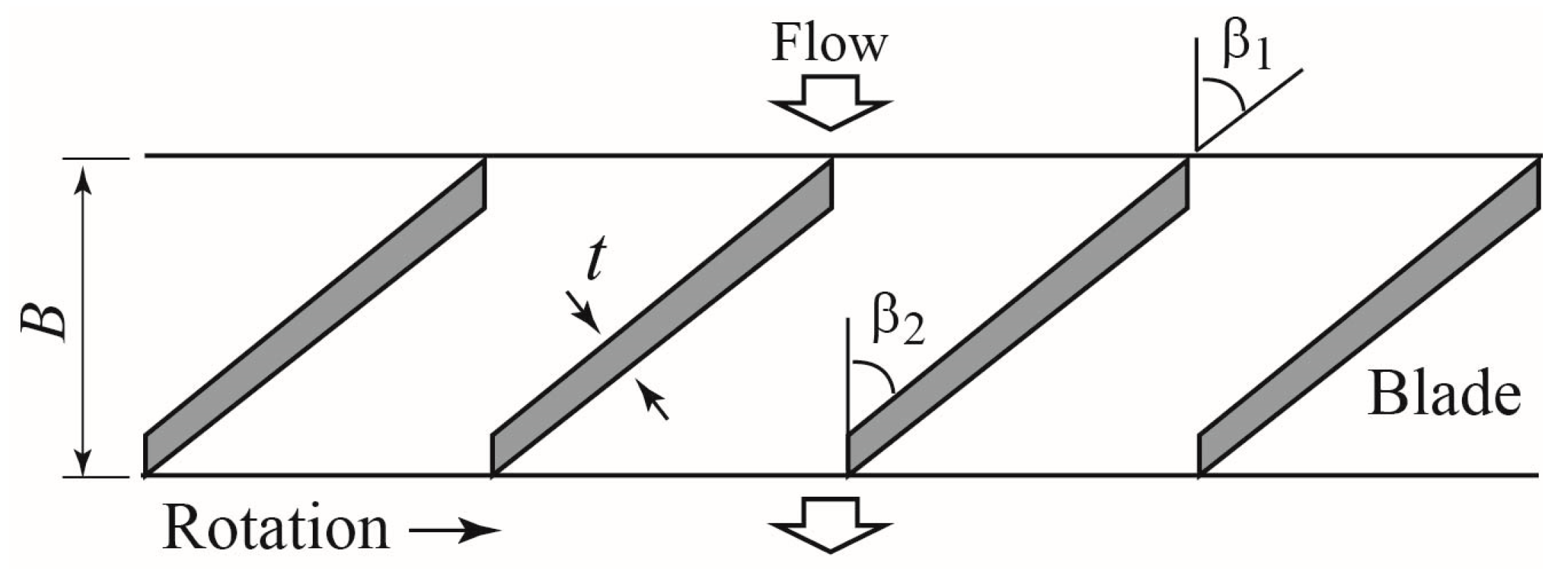
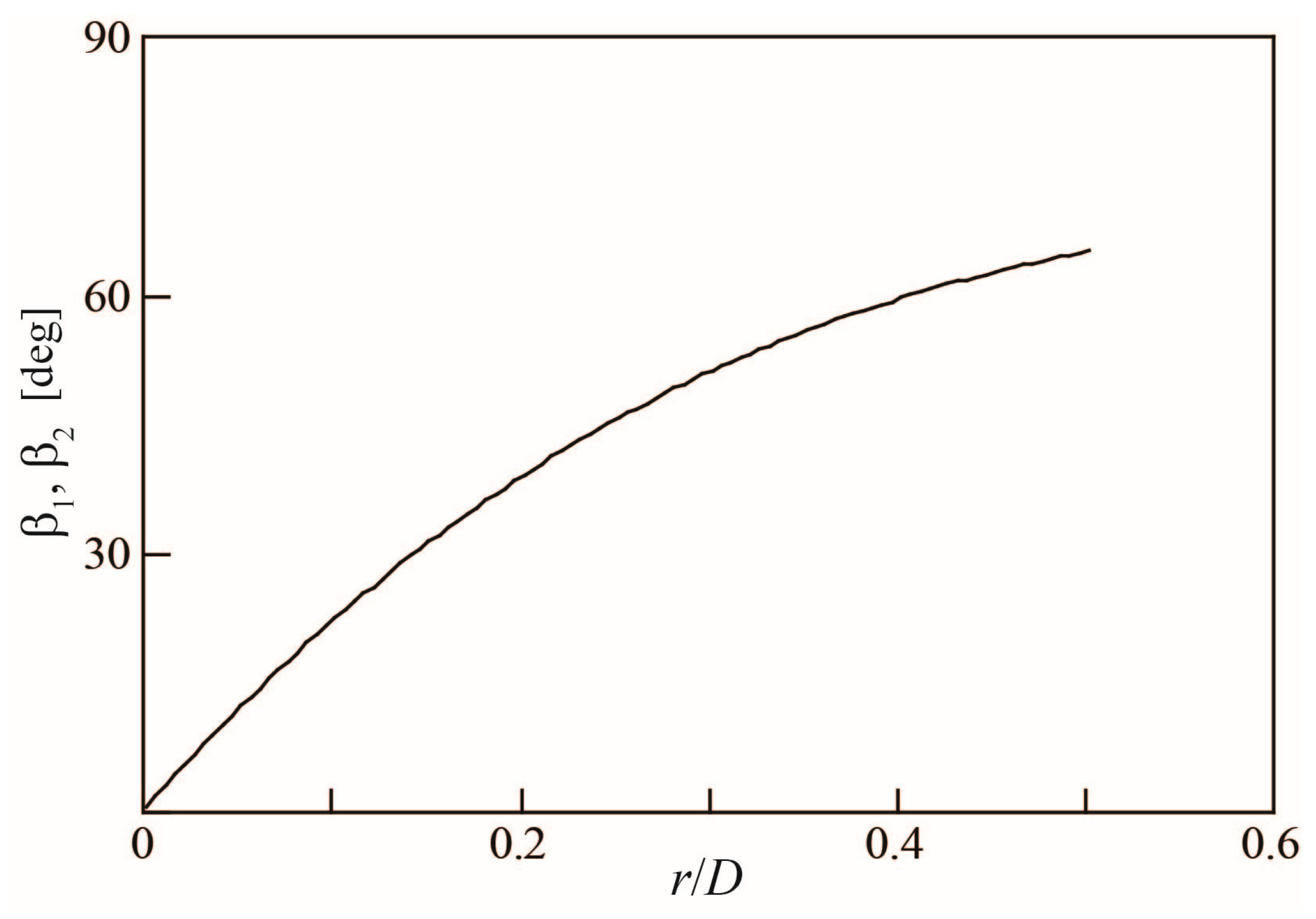
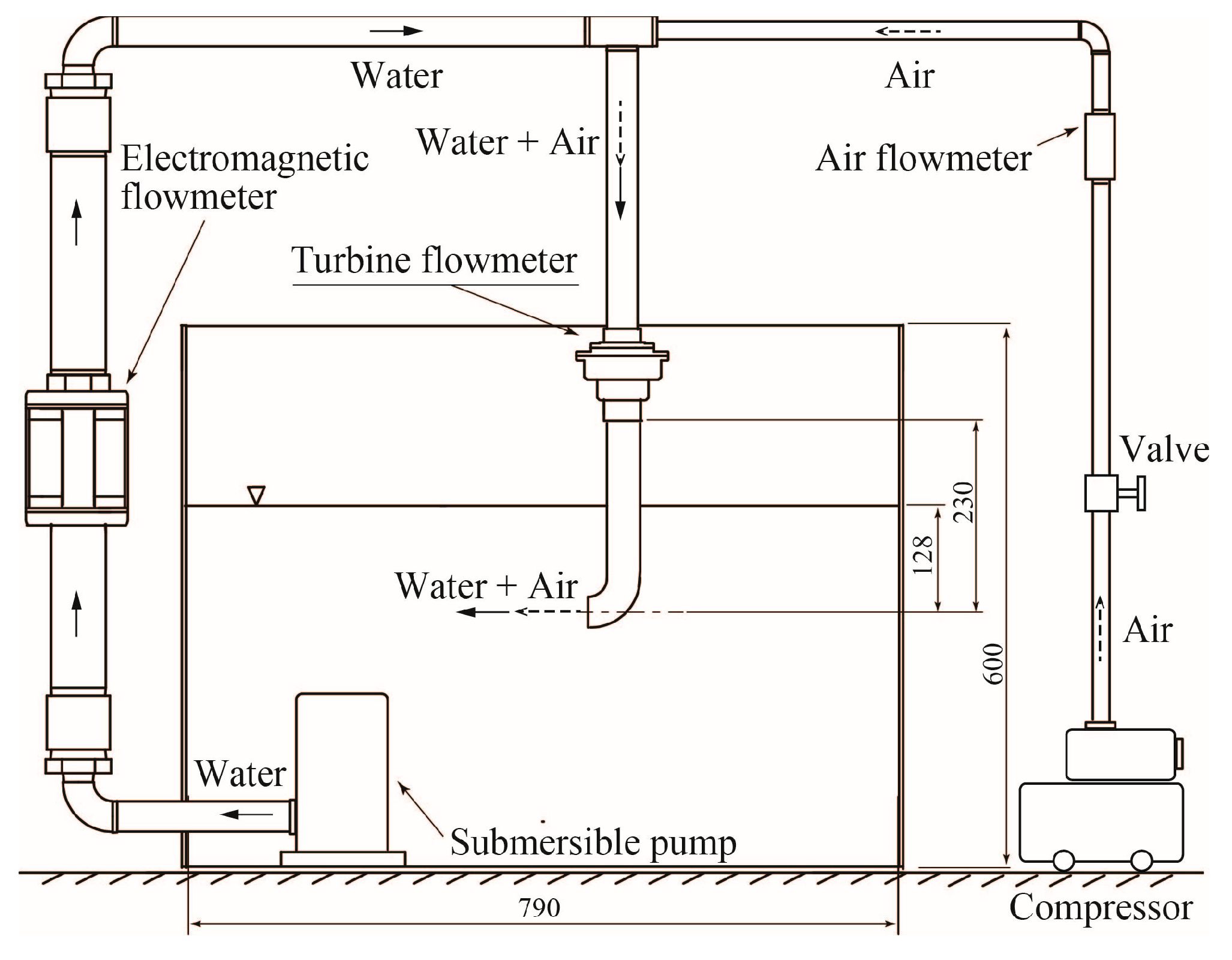
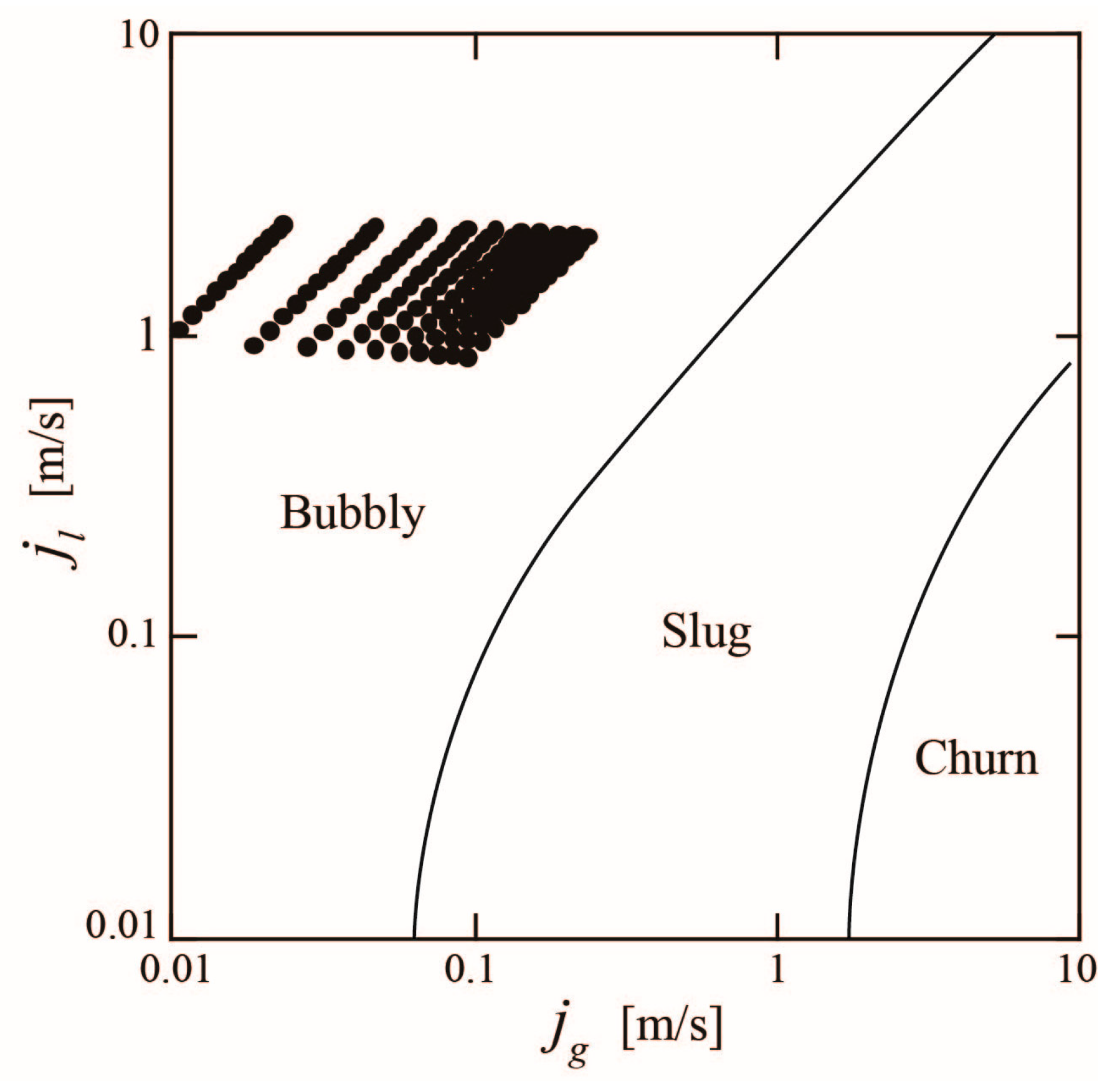
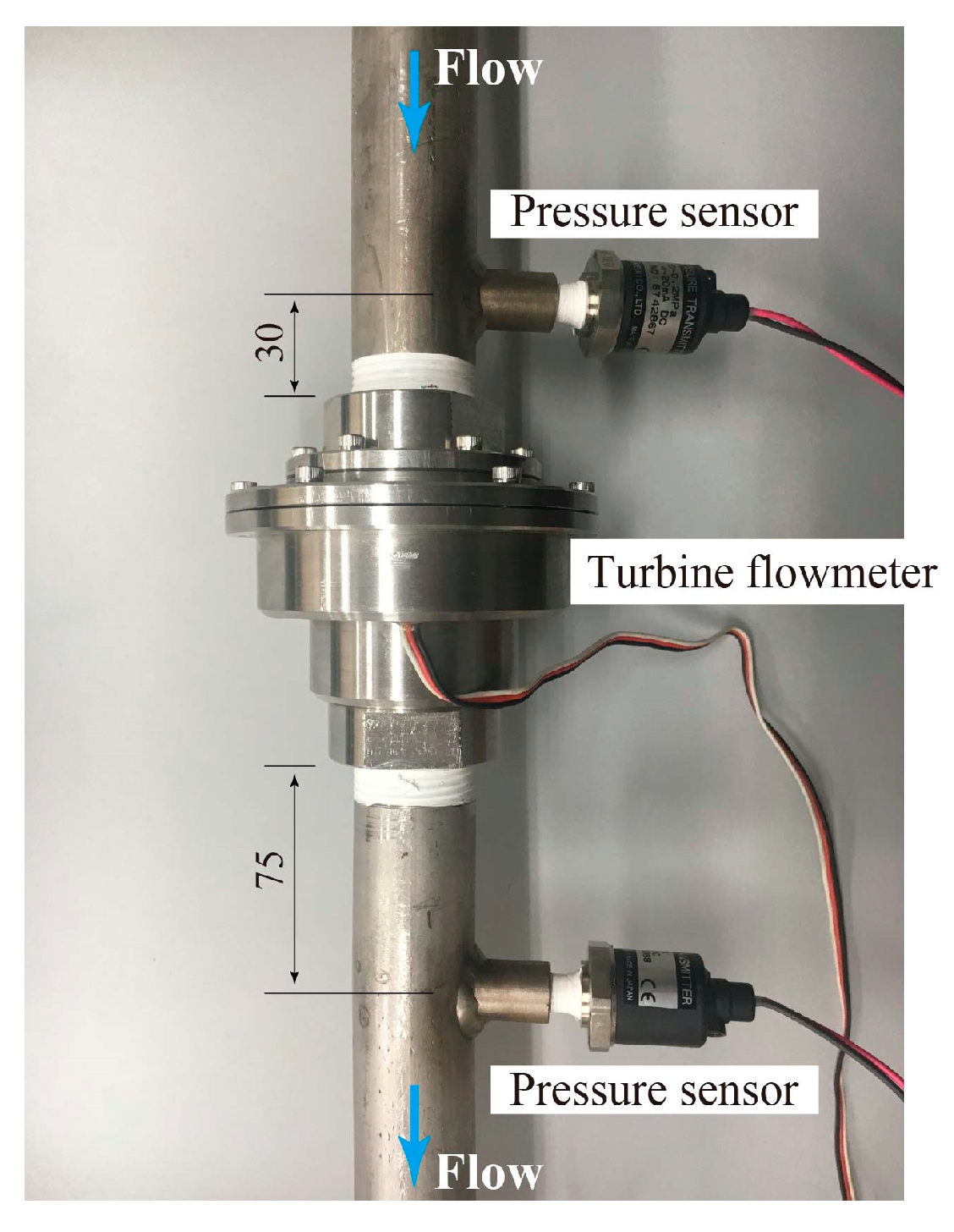
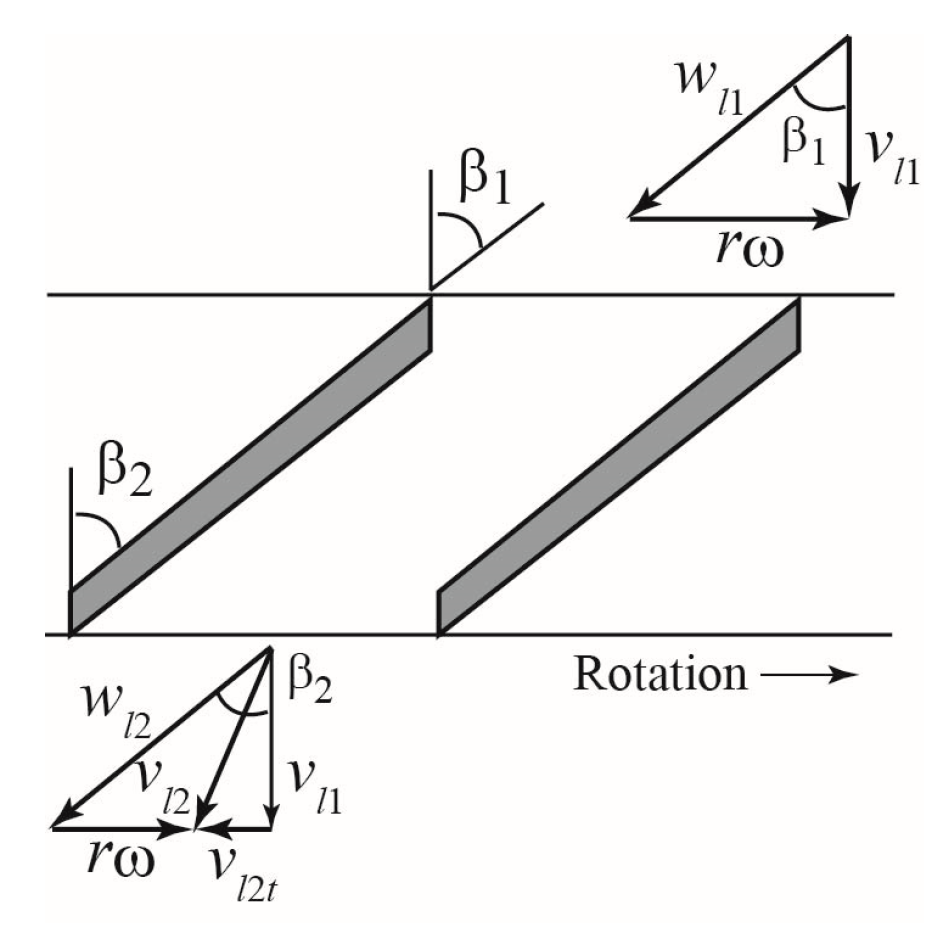
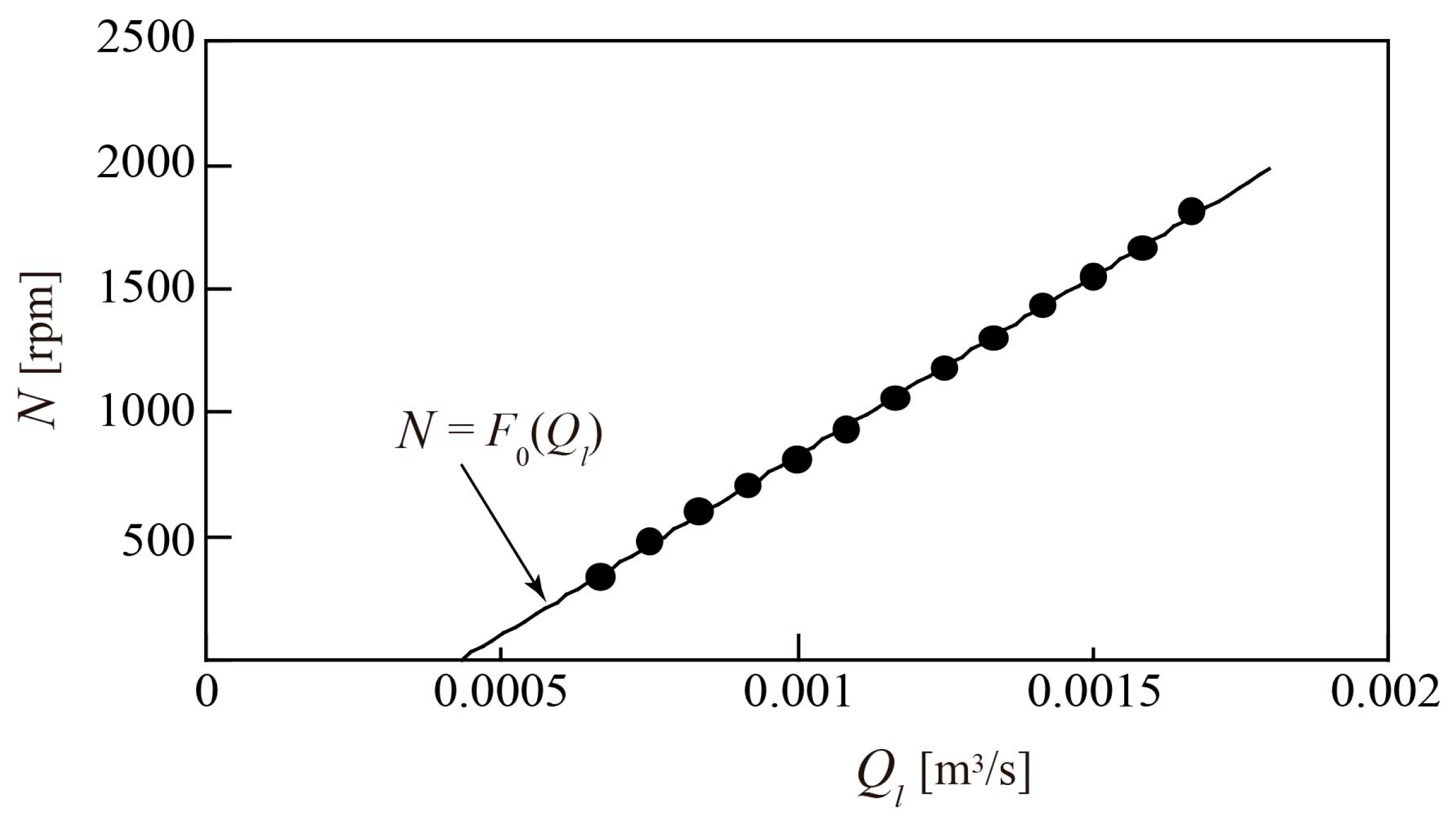


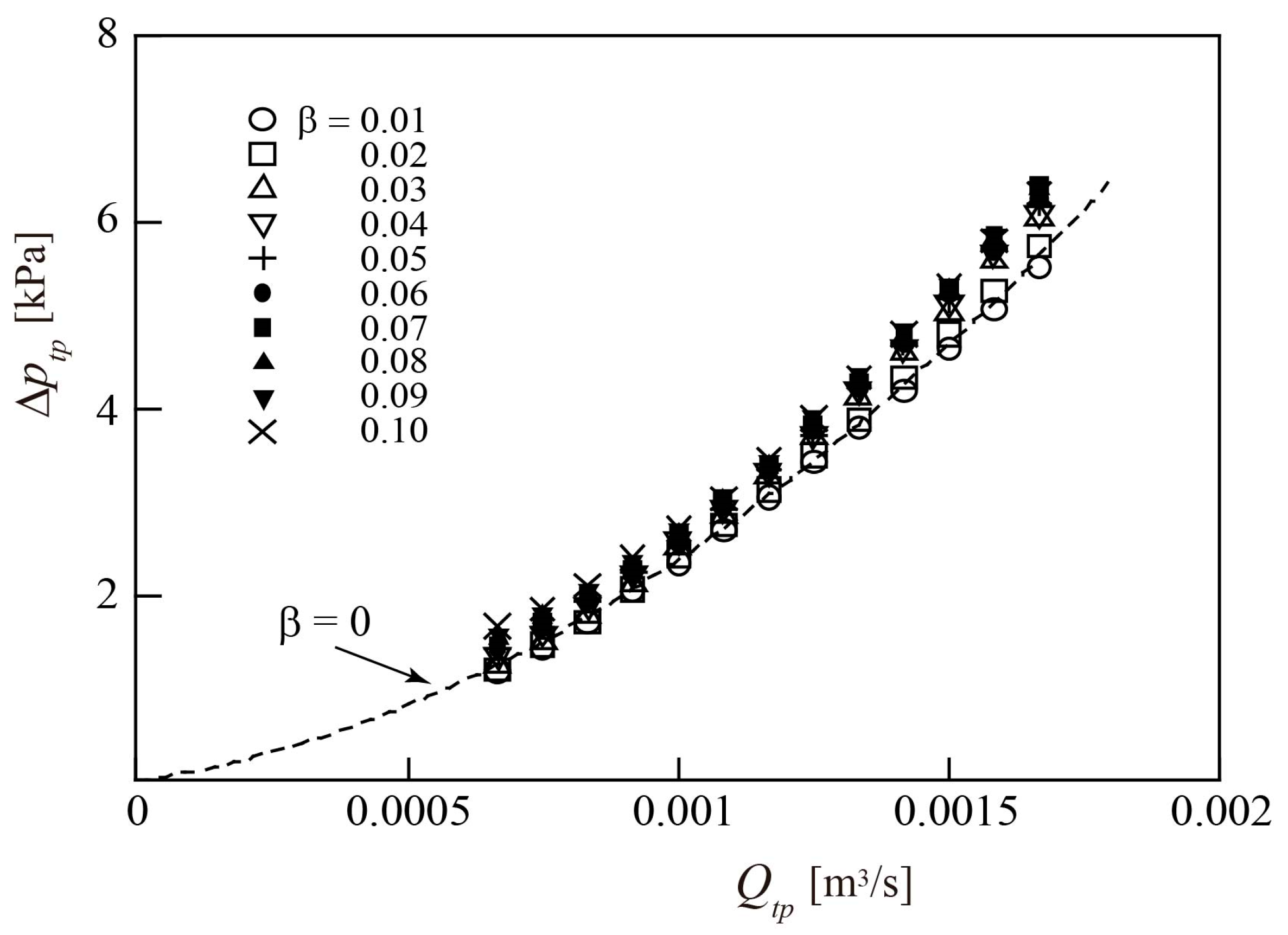

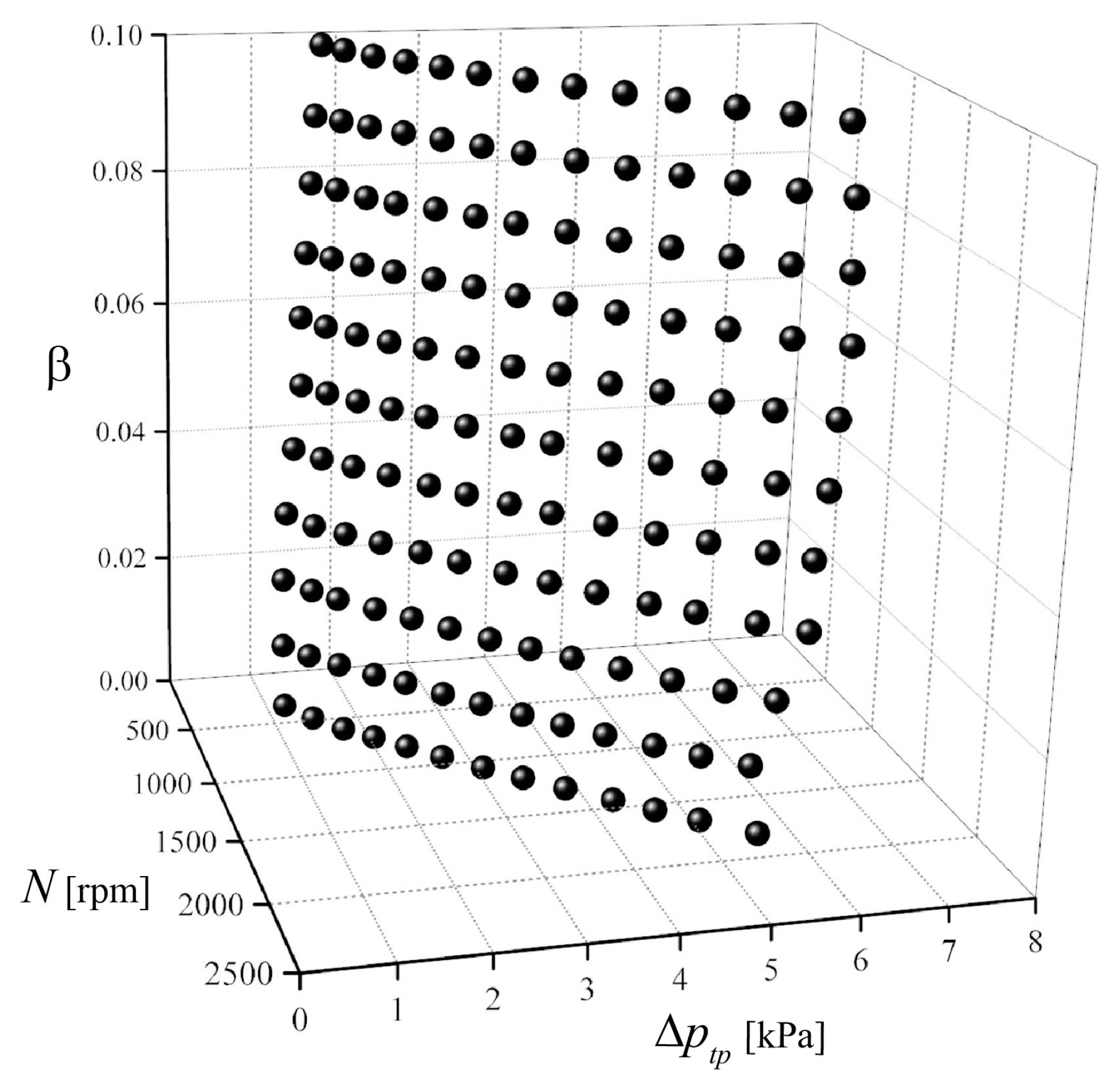
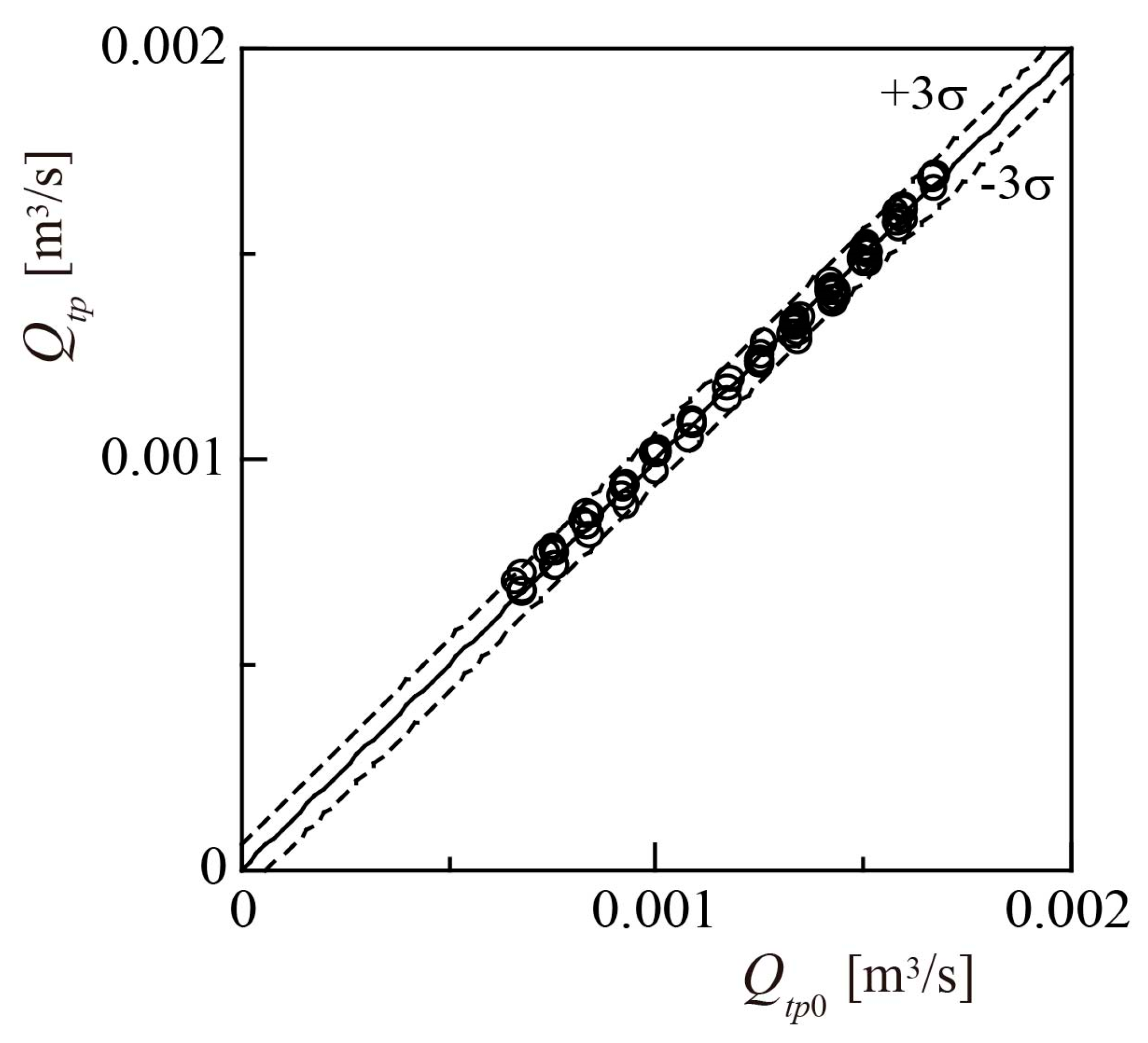


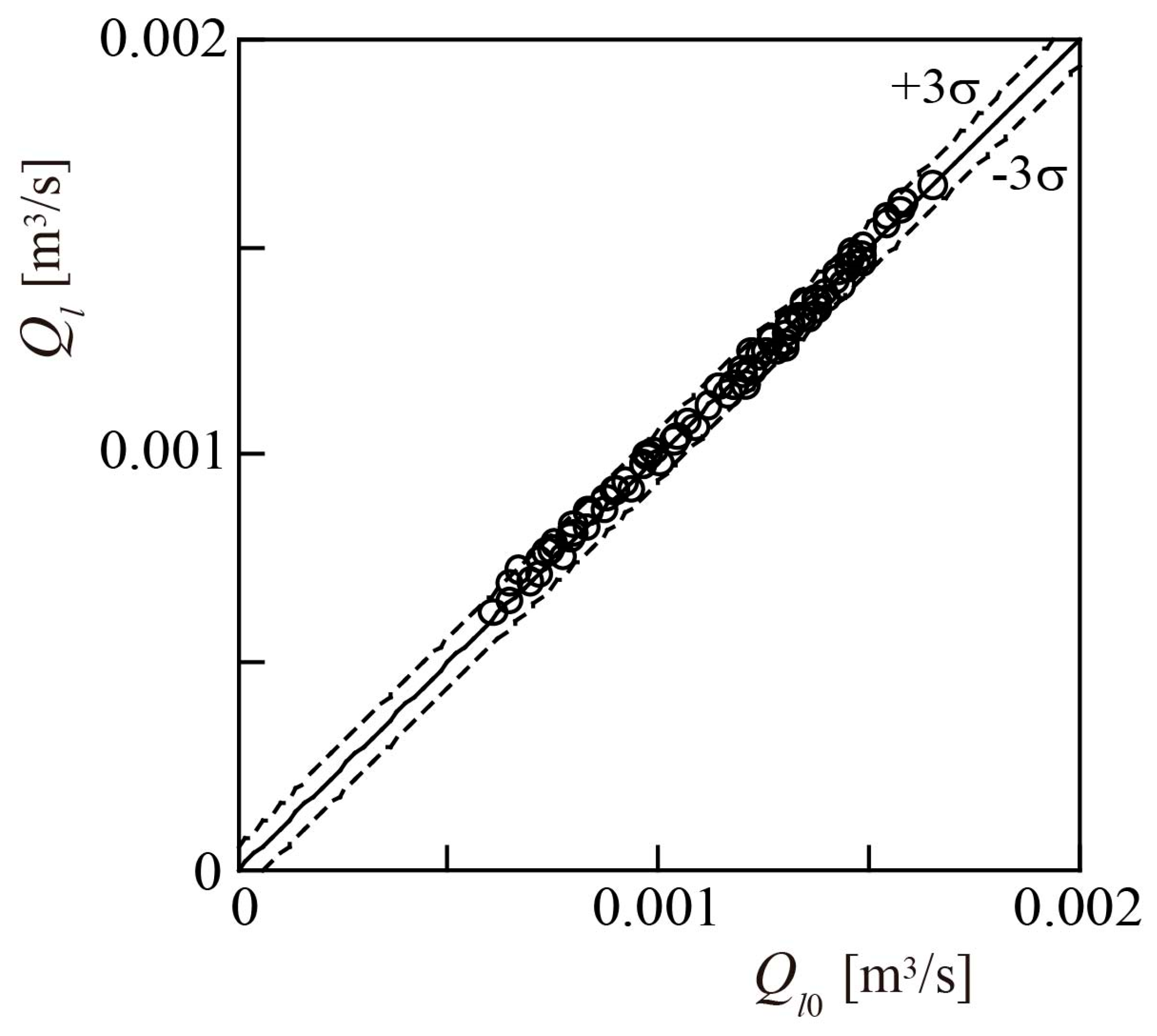
Disclaimer/Publisher’s Note: The statements, opinions and data contained in all publications are solely those of the individual author(s) and contributor(s) and not of MDPI and/or the editor(s). MDPI and/or the editor(s) disclaim responsibility for any injury to people or property resulting from any ideas, methods, instructions or products referred to in the content. |
© 2023 by the authors. Licensee MDPI, Basel, Switzerland. This article is an open access article distributed under the terms and conditions of the Creative Commons Attribution (CC BY) license (https://creativecommons.org/licenses/by/4.0/).
Share and Cite
Uchiyama, T.; Miyamoto, S.; Horie, K.; Takamure, K. Simultaneous Measurement of Volumetric Flowrates of Gas–Liquid Bubbly Flow Using a Turbine Flowmeter. Sensors 2023, 23, 4270. https://doi.org/10.3390/s23094270
Uchiyama T, Miyamoto S, Horie K, Takamure K. Simultaneous Measurement of Volumetric Flowrates of Gas–Liquid Bubbly Flow Using a Turbine Flowmeter. Sensors. 2023; 23(9):4270. https://doi.org/10.3390/s23094270
Chicago/Turabian StyleUchiyama, Tomomi, Shogo Miyamoto, Kosuke Horie, and Kotaro Takamure. 2023. "Simultaneous Measurement of Volumetric Flowrates of Gas–Liquid Bubbly Flow Using a Turbine Flowmeter" Sensors 23, no. 9: 4270. https://doi.org/10.3390/s23094270
APA StyleUchiyama, T., Miyamoto, S., Horie, K., & Takamure, K. (2023). Simultaneous Measurement of Volumetric Flowrates of Gas–Liquid Bubbly Flow Using a Turbine Flowmeter. Sensors, 23(9), 4270. https://doi.org/10.3390/s23094270





